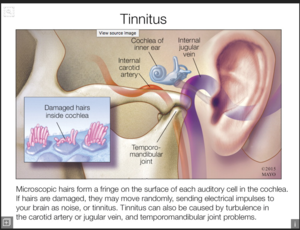A night splint can be quite helpful, perhaps even necessary for some folks.
I have an approach to addressing the head/neck/jaw muscles that has been helpful for many. There is a more guided and complete program that I sell, but this free video alone has been the solution for many, as you will read in the comments on YouTube.
Of course, breaking the cycle of muscle toxicity is not the end for many people, but it provides a beginning and a tool for future relief.
Anytime I hear someone say that their tinnitus (or headache) comes on or gets worse after sleep, it is almost certainly 1 of 2 things: Postural stress or Mental Stress response. Both are related to the Head, Neck, and/or Jaw muscles and related nerves being irritated through waste product build-up in the muscle.
- Postural stress means that the neck or jaw are being physically displaced by laying on them wrong. When people wake and go back to sleep again 2 significant things often happen:
1) They change to a more "comfortable" position. This position may be great, or it may give temporary relief or comfort but result in neck or jaw strain over an extended time. This happens a lot with those who wake with back or neck pain also.
2) They start thinking of something. For many people this prevents them from getting back to sleep, but for others, it may be the beginning of a stressful thought process that is processed stressfully throughout the rest of the sleep.
- Mental Stress response means that you are trying to solve stressful problems while you are asleep. Of course, not to mention that we are usually unsuccessful at solving the problems, we are tightening our head/jaw muscles as part of this futile process. Perhaps we do this, because our head/jaw/neck muscles are part of our physical expression/communication. Anyway, if this is the cause, the solution goes back to RELAXING, BEFORE we go to sleep and perhaps, as mentioned, a mouth splint to reduce some of the teeth clenching.
OF COURSE, Relaxing is MUCH easier said than done. I recognize that this is a cycle that feeds itself, but at some point, we must begin to starve the beast-y cycle. Neurologically, we create pathways that make thought processes (including stress) more efficient. It takes time and effort (practice, training) to lay down new pathways and allow the old, highly-developed ones to atrophy. It is a bit easier when you know what you are dealing with.
I hope this is relevant to you and that it helps.

 Member
Member



